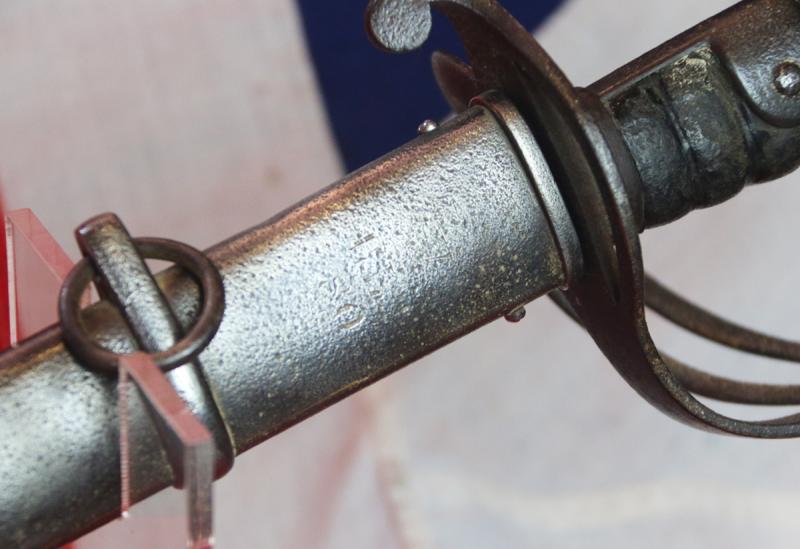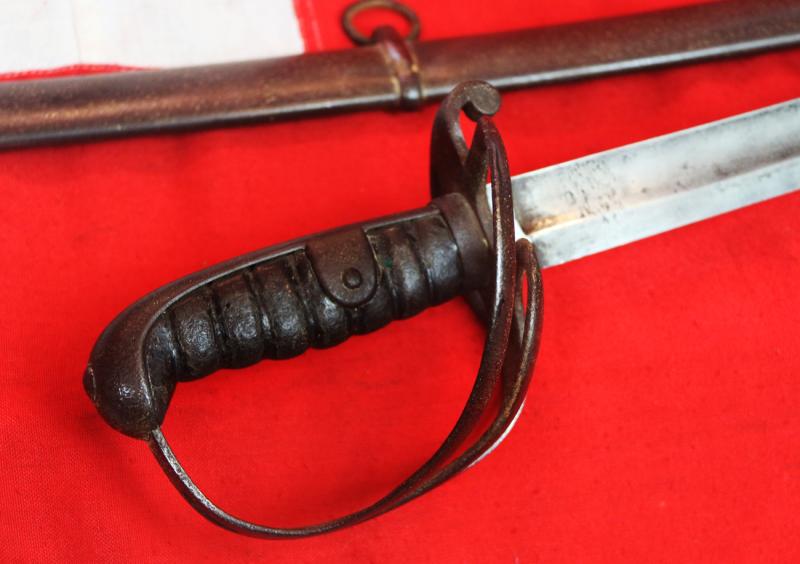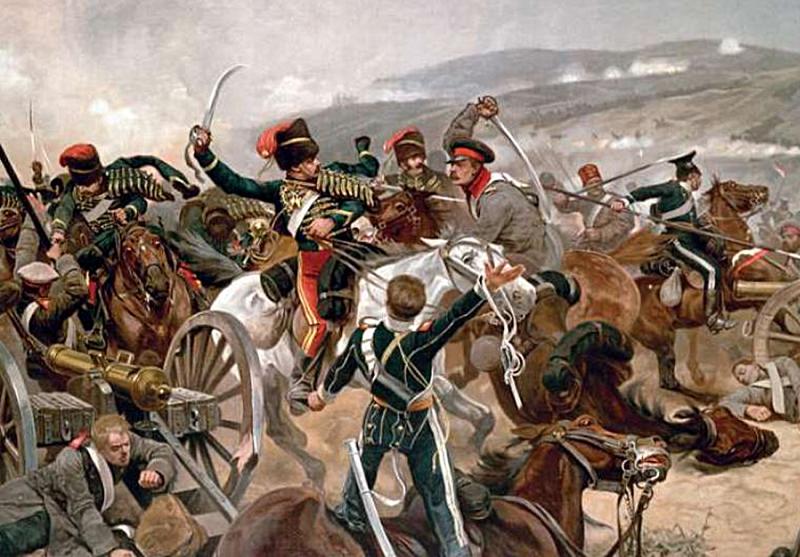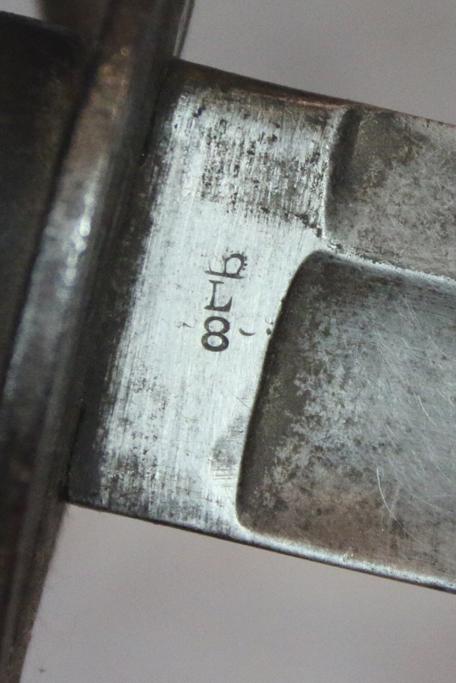A Very Scarce 1821 Pattern, Crimean War Service, Cavalry Trooper's Sabre In It's Combat Scabbard with Regt. Markings, Makers Name. and Ordnance Stamps. The Same Form Of Sabre Used In The Charge of the Life Brigade At Balaclava
As used in the Crimean War such as the infamous and renown 'Charge of the Light Brigade' by troopers of several regiments, other regiments used the 1853 pattern sabre. A most impressive sabre, and very good indeed. The very type of ordnance made and issued Hussar's and Lancer's trooper's sabre used by British Cavalry Officer's in the ill fated charge in the Crimean War against Russia. All steel three bar steel hilt, combat blade with leather covered wooden ribbed grip. Steel scabbard with regimental markings, but very difficult to read.
Absolutely used at the time and used by all the serving cavalry troopers still issued with the 1821 pattern sabre, in the famous 'Charge'. In the Crimean War (1854-56), the Light Dragoons were in the forefront of the famous Charge of the Light Brigade, immortalized by Tennyson's poem of that name ("Into the valley of death rode the six hundred").
The regiments adopted the title hussars at this time, and the uniform became very stylish, aping the hussars of the Austro-Hungarian army. But soon the blues and yellows and golds gave way to khaki as the British army found itself in skirmishes throughout the far-flung Empire, in India and South Africa especially.
In 1854 the regiment received its orders from the War Office to prepare for service overseas. Five transport ships - Harbinger, Negotiator, Calliope, Cullodon, and the Mary Anne – embarking between the 8 May and 12 May, carried 20 officers, 292 other ranks and 298 horses. After a troubled voyage, the regiment arrived at Varna, Bulgaria on the 2 June. On the 28 August the entire Light Brigade (consisting of the 4th Light Dragoons and 13th Light Dragoons, 17th Lancers, the 8th Hussars and 11th Hussars, under the command of Major General the Earl of Cardigan were inspected by Lord Lucan; five men of the 13th had already succumbed to cholera.
On the 1 September the regiment embarked for the Crimea - a further three men dying en-route.
On the 20 September the regiment, as part the Light Brigade, took part in the first major engagement of the Crimean War, the Battle of the Alma. The Light Brigade covered the left flank, although the regiment’s role in the battle was minimal. With the Russians in full retreat by
late afternoon, Lord Lucan ordered the Light Brigade to pursue the fleeing enemy. However, the brigade was recalled by Lord Raglan as the Russians had kept some 3,000 uncommitted cavalry in reserve.
During the 25 October the regiments, the Light Brigade, took part in the Battle of Balaclava and the famous Charge of the Light Brigade.
The 13th Light Dragoons formed the right of the front line. The 13th and 17th moved forward; after 100 yards the 11th Hussars, in the second line, also moved off followed by the 4th and 8th. It was not long before the brigade came under heavy Russian fire. Lord Cardigan, at the front of his
men, charged into the Russian guns receiving a slight wound. He was soon followed by the 13th and 17th. The two squadrons of the 13th and the right squadron of the 17th were soon cutting down the artillerymen that had remained at their posts. Once the Russian guns had been passed, they engaged in a hand-to-hand fighting with the enemy that was endeavouring to surround them by closing in on either flank.
However, the Light Brigade having insufficient forces and suffering heavy casualties, were soon forced to retire. Capt. Louis Edward Nolan (January 4 1818-October 25 1854), who was a British Army officer of the Victorian era, an authority on cavalry tactics, and best known for his controversial role in launching the disastrous Charge of the Light Brigade during the Battle of Balaclava. He was the first casualty of that engagement. It is very nice to see an ordnance, Enfield made, and front line regimental issue most rarely surviving example. It has super edged-to-edge close combat edge cuts, possibly gained while used against Russian Artillerymen.
Over two decades ago we were delighted to buy Captain Nolan's undress sabretache that was used to carry the order in the Charge of the Light Brigade, and was recovered from beneath his and his horses bodies after the battle. It spent most of its life after the charge in two museums, one at the rebuilt and re-sited Crystal Palace in London. We were privileged to buy direct it from the original family owners with the personal assistance of the late Gordon Gardner, Militaria Expert of Sotheby's from 1979
Code: 25383








